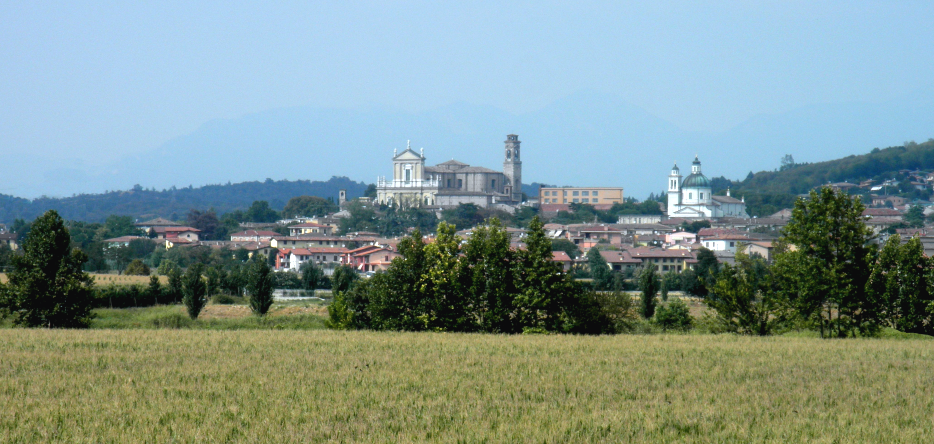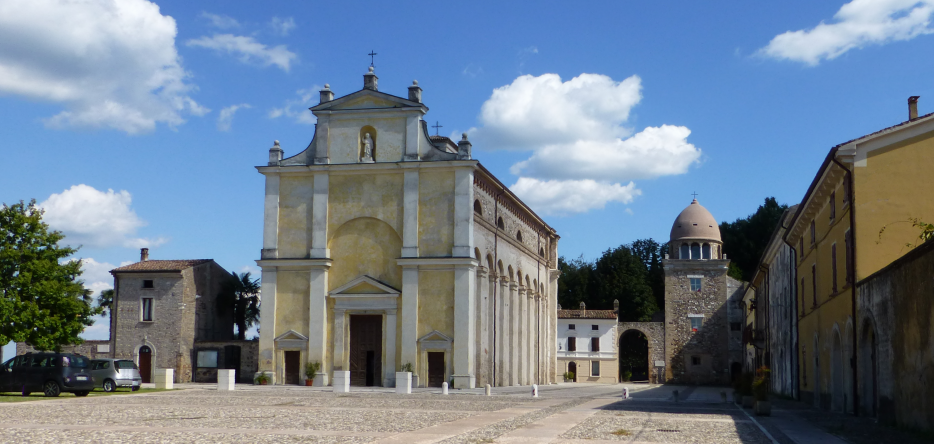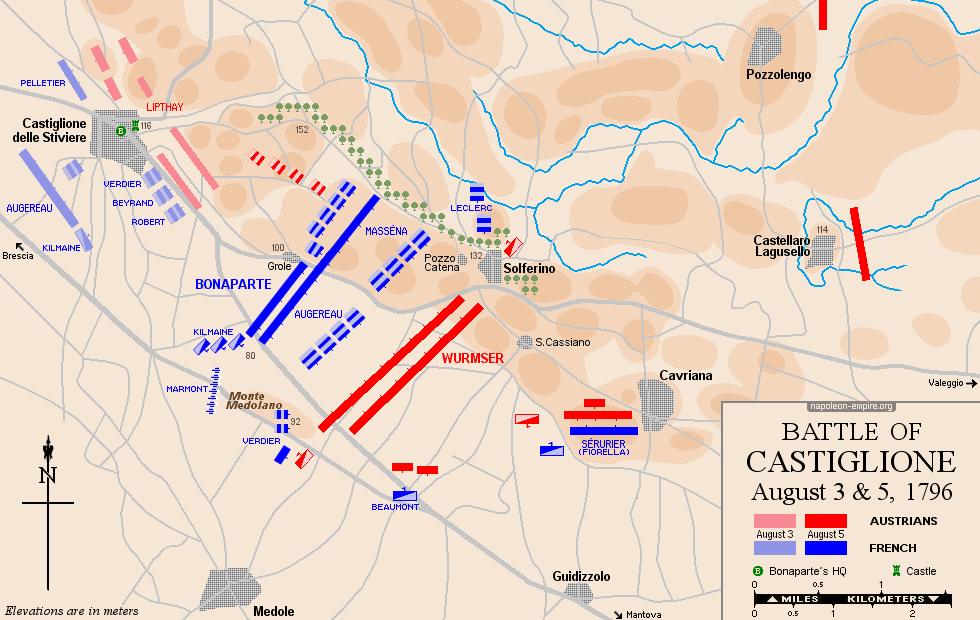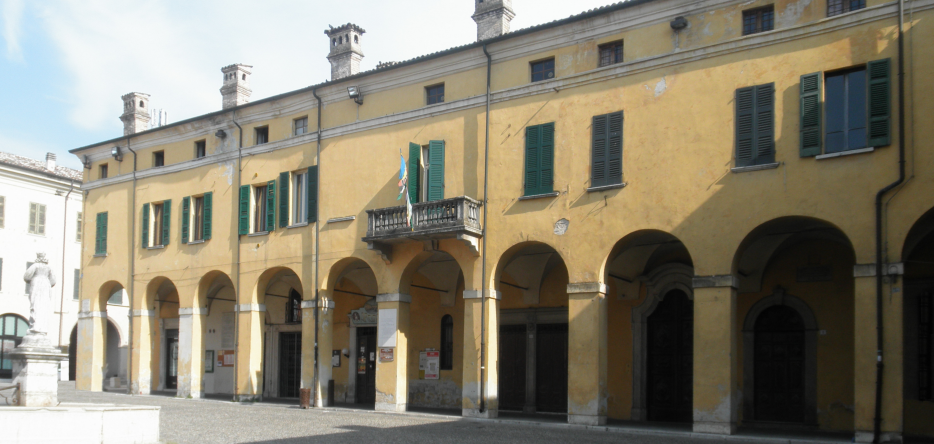Date and place
- August 5, 1796 at Castiglione delle Stiviere and Solferino, Lombardy (now in the province of Mantua, Italy).
Involved forces
- French army: 30,000 men under the command of General Napoleon Bonaparte.
- Austrian army: 29,000 men under Dagobert Sigmund von Wurmser.
Casualties and losses
- French army: 1,100 to 1,500 men (dead or wounded).
- Austrian army: 2,000 men killed or wounded, 1,000 prisoners, 20 cannons.
Aerial panoramas of the Castiglione battlefield
The Battle of Castiglione marked the end of the first Austrian attempt to unblock the city of Mantua [Mantova]. It took place on the very site where Napoleon Bonaparte's nephew, Napoleon III, would win the battle of Solferino almost sixty-three years later.
General situation
The first phase of the Italian campaign came to an end with the Austrians' retreat into the Tyrol [Tirol] following their defeat at Borghetto on May 30, 1796. Some 12,000 of them, however, found refuge in the city of Mantua .
As a result, the French had been laying siege to the city since early June. Its fall would open the road to Vienna [Wien]; its resistance would fix them in front of its walls ; its deliverance would drive them out of Lombardy. The city was therefore of vital importance to both sides.
In the last days of July, the Austrians sent an army to liberate Mantua. General Dagobert Sigismund von Wurmser took command. He had around 50,000 men at his disposal, and his plan of operation involved driving them down from the Tyrol to the Po plain via both shores of Lake Garda.
General Peter Vitus von Quasdanovich led the 18,000-strong right wing. The 32,000-strong left wing, on the eastern shore of the lake , came under Wurmser's direct command.
The first engagements between the French and Austrians, on July 29, turned to the advantage of the latter, who were clearly numerically stronger. After holding a war council with his main generals, during which Charles Augereau showed himself to be the most resolute, Bonaparte reacted swiftly.
He decided to lift the siege of Mantua, to destroy and abandon his equipment and artillery on the spot to hasten the movement, and to concentrate his army to fall without delay on one or other of the enemy columns before they came together. He chose Quasdanovich's column, which seemed the weakest and threatened his rear. Once the latter had been pushed back to the north of the western shore of Lake Garda, Bonaparte turned against Wurmser.
Preliminaries
The first battle took place on August 3, 1796. It pitted the Augereau division against the Anton Lipthay (or Liptay) von Kisfalud division, an advanced element of the Wurmser column, around the village of Castiglione delle Stiviere :

Lipthay was set up on both sides of Castiglione on a northwest-southeast axis. The French brigades of generals Louis Pelletier and Martial Beyrand attacked his left and right respectively, while general Jean Antoine Verdier stormed the Castiglione castle.
After bitterly defending the place, the Austrians finally gave in. Their retreat brought them within range of General Jean Gilles André Robert 's troops, who had turned their positions the previous night and were now in their rear. The French fire disrupted the enemy's retreat.
Augereau called in his reserves. But vanguards from the rest of the Wurmser column began to appear. Lipthay, taking advantage of these reinforcements, maneuvered in the direction of Guidizzolo , to the south-east towards Mantua, where his leader was soon to appear.
Augereau reacted by deploying several regiments on the Medole plain , supported by the cavalry of general Charles Edouard Jennings de Kilmaine , who had joined the battlefield during the operations. The conquered heights, north of the village of Castiglione, were left to Pelletier's care.
After another fierce battle in which General Beyrand was killed, the French remained in control. Lipthay withdrew to Solferino to the east.

The engagement cost each army around 1,000 men, and probably even more on the French side. The result, added to that of the series of battles waged further west by Bonaparte and Masséna against Quasdanovich, made it impossible for the two Austrian columns to join forces.
Positions
On the morning of August 5, the French army advanced in the direction of Mantua. Shortly after the village of Castiglione delle Stiviere, close to the village of Solferino, it came into contact with Wurmser's right wing. The left wing touched the road from Brescia to Mantua , not far from Monte Medolano .
The Austrian general-in-chief had around 29,000 men at his disposal and was perhaps counting on Quasdanovich's support, not knowing that the latter's column was no longer in a position to intervene.
The French had around 30,000 men. They therefore enjoyed a slight numerical advantage. The Augereau division formed the right, with the Kilmaine division reserve behind it in echelons. The André Masséna division occupied the left.
The Jean-Mathieu Philibert Sérurier division was at Guidizzolo, ideally placed to fall on the Austrians. It arrived from Marcaria, thirty-five kilometers to the south on the banks of the Oglio, where it had moved after the evacuation of Mantua, in order to cover the road to Cremona and Piacenza. On August 4, it was ordered to advance to its new position the following night. Sérurier, ill, temporarily handed over command of his division to brigadier general Pascal-Antoine Fiorella .
Fighting
The first French offensive was a sham. Bonaparte committed only the few forces necessary to capture the enemy's attention and prevent them from perceiving Fiorella's movement. While waiting for Fiorella's arrival, the bulk of the French troops remained in column at the rear of the battle. The Austrians easily repelled this mock attack.
Believing themselves already victorious, they set about turning the French left through Castel Venzago, northeast of Castiglione. The news of Quasdanovich's retreat had not yet reached them. They could therefore hope to link up with him through this maneuver. In reality, however, this initiative only served to fragment the Austrian forces. This weakened their position.
On the opposite wing, a redoubt built on Monte Medolano (also known as Monte della Barcaccia, altitude 92 meters, elevation 7 meters above the surrounding plain) [45.35178, 10.52375] served as a support point for Wurmser's left:

This fortification was first energetically pounded by the horse artillery of Colonel Auguste Viesse de Marmont, then succumbed to the attack of three grenadier battalions commanded by General Verdier. Several squadrons of General Marc Antoine Bonnin de La Bonninière de Beaumont 's French cavalry overran the opposing flank, heading east-southeast towards Cavriana to meet the Sérurier division.
The latter's arrival in their rear so surprised the Austrians that Wurmser himself was almost captured. With no reserves available, his second line had to turn to oppose the newcomers.
Bonaparte chose this moment to bring in the bulk of his forces. Masséna attacked the junction between the enemy center and right wing, while Augereau made a frontal attack on the center and Kilmaine's reserve moved to the left. Meanwhile, Fiorella endangered the Austrian line of retreat.
For Wurmser, an orderly withdrawal became the only reasonable objective. He was, however, disrupted by the arrival on the battlefield of Adjutant General Charles Victoire Emmanuel Leclerc and the two half-brigades of Hyacinthe François Joseph Despinoy 's division that he had brought from Brescia.
The newcomers seized the Tower of Solferino [Rocca di Solferino] [45.37173, 10.56373] and its surroundings , which disrupted the Austrians' retrograde march. The Austrians hurried back across the Mincio , supported by the forces of Adam Bajalics von Bajahàza, who had been left to guard the river.
The Austrians then cut the bridges behind them. The bulk of their troops withdrew to Valeggio sul Mincio . The right wing, which had largely moved north in its attempt to outflank the French, retreated to Peschiera del Garda .
Bonaparte did not pursue the enemy beyond Pozzolengo and Castellaro Lagusello , less than ten kilometers east of the battlefield.
Results
The numerical superiority of their cavalry enabled the Austrians to limit the consequences of their setback. Nevertheless, they left behind twenty cannons, a thousand prisoners and two thousand dead or wounded.
The French lost around 1,300 men.
Consequences
Although Wurmser had not suffered a disastrous defeat, he was no longer in a position to hold his ground against the French army. He only realized this after trying to entrench himself near Peschiera, only to be driven out by Masséna. His troops then returned to Tyrol via the Adige valley , with the exception of the soldiers left behind in Mantua to renew and reinforce the garrison.
After a few days, the French regained the positions they had held prior to the Austrian offensive. However, they had lost all their siege equipment and had to content themselves with a simple blockade of Mantua. Although they were consistently victorious, their overall situation ultimately deteriorated.
Map of the battle of Castiglione

Picture - "Battle of Castiglione". Painted 1836 by Victor Adam.

During this period of the Italian Campaign, Napoleon Bonaparte's headquarters were successively :
- Roverbella in June 1796, during the siege of Mantua;
- in Marmirolo, in the presbytery adjacent to the church of St. Philip and St. James , from July 15 to 19;
- in Castiglione's Piazza Colonna [now Piazza Ugo Dallo] on August 4 and 5:

 Display the Map of the First campaign in Italy (1796-97)
Display the Map of the First campaign in Italy (1796-97)
Photos Credits
Photos by Lionel A. Bouchon.Photos by Marie-Albe Grau.
Photos by Floriane Grau.
Photos by Michèle Grau-Ghelardi.
Photos by Didier Grau.
Photos made by people outside the Napoleon & Empire association.